Discover Coffee Series
Aim
Often we hear people say how much they love coffee from a particular country. As roasters though, we know that there can be big swings in flavour within a country. So, with this series we are hoping to demonstrate :
1. The differences that can exist in coffees within a country, according to a few simple differences.
2. That coffee is a wonderfully variable product, often with subtle differences.
3. That to move beyond a basic appreciation of coffee, there are small things you can do to bring about changes in flavour.
This series also works as a journey to improve your palate and appreciation of coffee. Whilst all 9 coffees are specialty coffees and score 85+ the first in the series demonstrates rather obvious profile differences with Series 2 and 3 being more refined.
Note
It also needs to be noted that we are demonstrating only some of the obvious differences that exist at farm level (others to note are defect count, elevation, soil type, shade or full sun, rainfall, frost and use of fertilisers). In addition to this, there is so much that can happen between farm and cup most notably:
1. How the Roaster roasted the coffee.
A good roaster will put their spin into the roast to deliver it in a way that they feel is best for the coffee. Medium to light will generally bring out the best in the cup whereas dark roasts will burn off and mask the natural attributes of a coffee. Always drink coffee roasted within weeks or a few of months at the outset, and grind it just prior to consumption.
2. How You prepared the coffee.
There are many ways to prepare coffee for consumption, and many variables once again. Please consult our brew guides for examples, but consider grind size, water to coffee and yield ratio, contact time, agitation, pressure, submersion / bypass and coffee temperature.
To fully appreciate the differences in these coffees we recommend:
• Consult our brew guides for helpful tips to get a proper extraction.
• That you drink them black (we think that should go without saying).
• Allow the coffees to cool a small bit.
• Make them at the same time.
• Thinking of acidity as a good thing which brings your drink alive, gives it vivacity and lift. Like a cider or white wine. Notice it along the side and undersides of your palate.
• Thinking of body as adding depth and mouthfeel. Like a stout or red wine.. Feel it on the roof of your mouth towards the middle and back.
• Both acidity and body can enhance sweetness and flavour.

Method
By way of demonstration via 3 sets of 3 coffees. Each set will have 3 coffees from the same country but differ in just 1 aspect.
• In Discover Coffee Series 1 we will focus on Processing method.
• In Discover Coffee Series 2 we focus on Arabica Coffee Varietal.
• In Discover Coffee Series 3 we will focus on the Estate / Region.
DISCOVER COFFEE SERIES 1— PROCESSING
Release Date: 20/10/2022 – To purchase this set CLICK HERE
• Different processing methods: Natural, Washed and Anaerobic
• Same country: Ethiopia
• Same Arabica description: ‘Heirloom’’
We chose Processing as a place to start as this is without doubt the biggest influence on cup profile and the taste difference should be easy enough for all to get. All coffee cherries as picked off a tree must undergo some form of hulling, fermentation and drying to produce the raw coffee bean in a state which can be roasted. 3 basic ways to do this are washed, natural or anaerobic. Often the choice of processing depends on the facilities present at the processing plant, for instance, large drying patios required for naturally processed coffee might not be available on the steep hillside of a farm in Guatemala, or volumes of water required for washing might not be available at a processing plant in Ethiopia.
1. Washed:
• In this process the raw coffee cherry goes through a washing process to soften up, ferment and remove the bean where it is then dried.
• Coffees tend to exhibit lighter notes, floral tones, more refined acidity and a lighter body.
• For more details on this Discover Coffee Series process you can watch this quick video by Cafe Imports, CLICK HERE
• The coffee we selected for this is Banko Gotiti. How did you find it?
• We got notes of Jasmine, Apricot, Orange Blossom
2. Natural:
• In this process the raw coffee bean stays within the cherry where the fermentation takes place, until it is dried.
• Coffees tend to exhibit deeper, sweeter notes with more body than acidity. Depending on origin ranging from chocolate to stewed fruit.
• For more details on this Discover Coffee Series process you can watch this quick video by Cafe Imports, CLICK HERE
• The coffee we selected for this is Kabira.
• To us this coffee tastes of Toffee, Peach, Blackberry.
3. Anaerobic:
• In this process the raw coffee cherry is fully submerged in water and deprived of oxygen, softened where the bean is then removed before drying.
• Relatively new processing technique with still a lot of variety. Tends toward a huge uplift in the range of flavours with explosive notes compared to washed or naturals. Massive acidity, sometimes verging on sour like a sour IPA.
• For more details on this Discover Coffee Series process you can watch this quick video by Nordic Approach, CLICK HERE
• The coffee we selected for this is Hambela Wamena.
• In the cup this coffee tastes of Currant, Hibiscus, Tangerine.
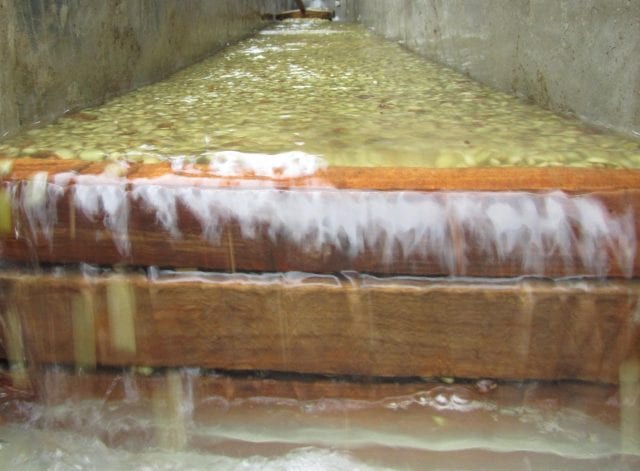
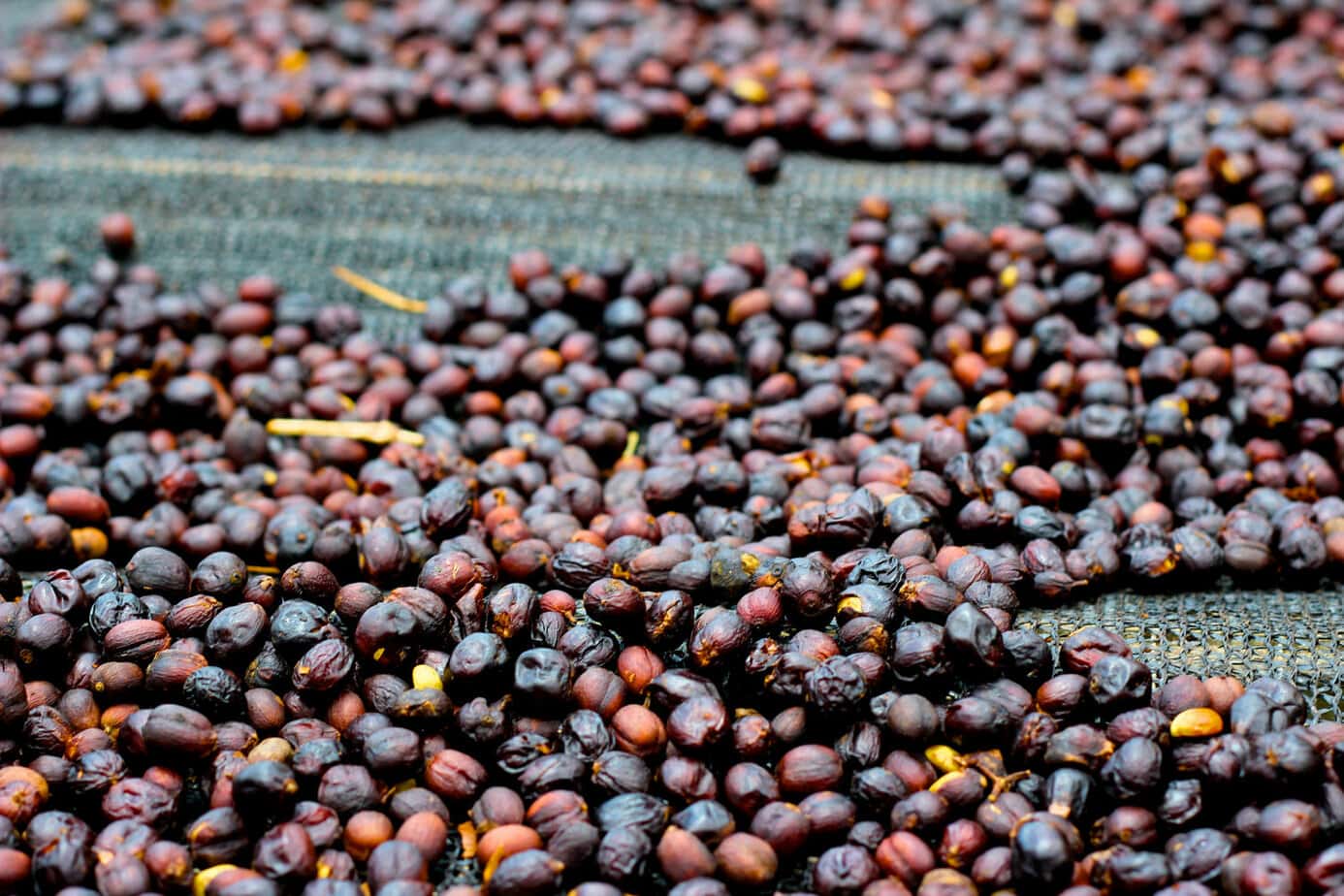

In Ethiopia coffee is mostly grown by many small farm holder lots where growers will bring their coffee to a station for further processing which will generally be setup to process coffee as washed or natural. As such, it is virtually impossible for us to source 3 coffees processed in 3 different ways from the same station – so we have settled for having them from the same country, since that is what this exercise is about after all. We further recognise that the term ‘heirloom’ can be a ‘catchall’ phrase used by brokers and growers from Ethiopia, as such no further information on variety is available.
DISCOVER COFFEE SERIES 2—ARABICA VARIETY
Release Date: TBD – To purchase this set CLICK HERE
• Different Arabica Varieties: (Red) Bourbon, Pacamara, Caturra
• Same country, same estate: Guatemala, La Colina
• Same processing method: Washed
Tasting the difference in variety is where things start to get interesting. This is not like tasting the difference between a Merlot and a Shiraz. We say it’s interesting because we love this part of the craft – it’s where you can really get into the subtle differences in coffee and really start to fine tune your palate … pay close attention to the parts of your tongue and mouth that light up with each coffee. Many in the industry will prize balance, but key to most is the role that acidity plays.
1. Pacamara:
• Developed in 1958, this is a cross of Pacas and Maragogype varietals. More disease resistant, tends to be a larger coffee bean and so develops flavours at different rates in the roaster drum.
• Medium to dense bodies, creamy texture, complex aromatics and subtle acidity.
• Notes range from chocolate to full fruitier citrics of red berries and stone fruit.
• With this coffee we found cupping notes of Red Apple, Green Bell Pepper, Cashew.
2. (Red) Bourbon:
• An average size bean which is very famous for cup quality throughout the Americans where it was originally brought to Bourbon (ReUnion) Island by French missionaries somewhere around the start of the 18th century.
• “Bourbon is valued for its complex acidity and wonderful balance. It often has a sweet, caramel quality and nice and crisp acidity but can present quite distinct flavours depending on where it is planted.” …. Mercanta Coffee Hunters.
• In the cup we found cupping notes of White Grape, Passion Fruit, Lemon.
3. Caturra:
• A natural dwarfed mutation of the Bourbon variety, although still producing average sized beans with often not quite as good cup quality as the Bourbon variety.
• As a mutant ot Bourbon we find they tend to be sweet, complex and crisp.
• We found cupping notes of Black Tea, Leather, Lemon Balm.
We fully encourage you to ‘cup’ (drink) these coffees at the same time, prepared the same way, and at the same temperature to appreciate the difference.
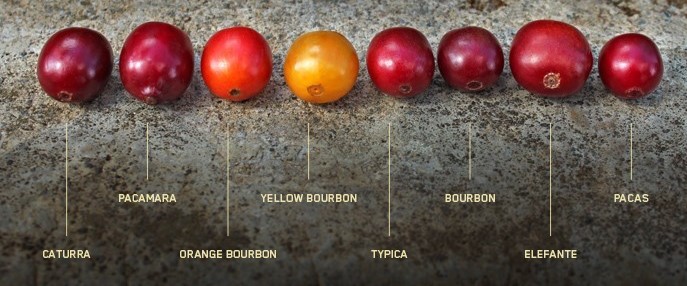
DISCOVER COFFEE SERIES 3—ORIGIN
Release Date: TBD – To purchase this set CLICK HERE
• Different estates: El Puente, El Campo, La Francisca
• Same country, same owner: Honduras, Caballero
• Same Process: Washed
• Same Varietal: Catuai
The taste differences here are again much more muted than they are with Series 1, however they demonstrate that even coffee from within the same region can taste different. Take coffee grown just 1km up a hill with altitude where there are less pests to produce defective beans and hence also have no need to use pesticide, perhaps uses a different varietal and gets a lot more sun and rain … for instance.
The Caballero family have many small to medium farms located in Marcala, south east in Honduras. Marysabel and Moises are very focused on sustainable practices in farming and milling. They have been extremely successful producing quality coffees and have contributed to the improving reputation of Honduran quality coffees.
They have a central mill in Xinacla where they do all the processing, which is somewhat typical for slightly bigger farm setups in Central America. The farms (trees) themselves are quite small, like a couple hectares max, and they are scattered around in different parts of the local region. Some of the small farm blocks are inherited or bought from Marysabel’s father, others they have bought over the years. Moises treats them like his kids, each one has slightly different conditions, sun exposure, steepness, and altitude, so some of them deal with frost or high winds or other issues that you have to manage as a farmer.
Whilst we can’t get a lot of information about the estates where these coffees come from, we have discernable differences in taste. These are truly fantastic coffees.
There is no right or wrong with cupping notes, as taste is subjective, to demonstrate this point please take note of the differences between our cupping notes and the brokers. As previoulsy stated, brewing has an enemormous effect on the end result in the cup profile.
1. El Puente:
• This farm lies at 1600 masl
• Our broker says that this coffee is bright and juicy with a clear orange like acidity and flavour. Layered, juicy stonefruit and a mild herbality. Finish with a mild flavor after eight chocolates.
• We found notes of Honeydew, Malt, Currant
2. El Campo:
• This farm was started in 2004 and sits at 1600 masl.
• Our broker says that this coffee is bright with complex layers with stewed peach, tropical fruit and rhubarb. Thick and syrupy body and a loooong and juicy finish.
• To us, this coffee was Simple Syrup, Black Cherry, Marshmallow.
2. La Francisca:
• This farm lies at 1487 masl
• Our broker says that this coffee is not complex, but very pleasant. Well structured with juicy stonefruit and brown sugar sweetness. Mild verbena herbality.
• In the cup we found Nectarine, Black Grape, Bakers Chocolate.
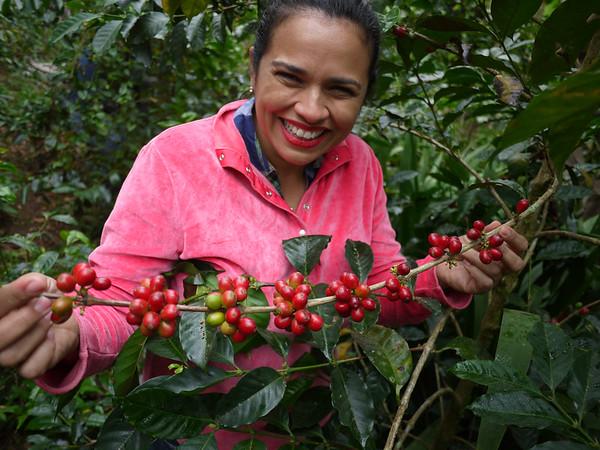
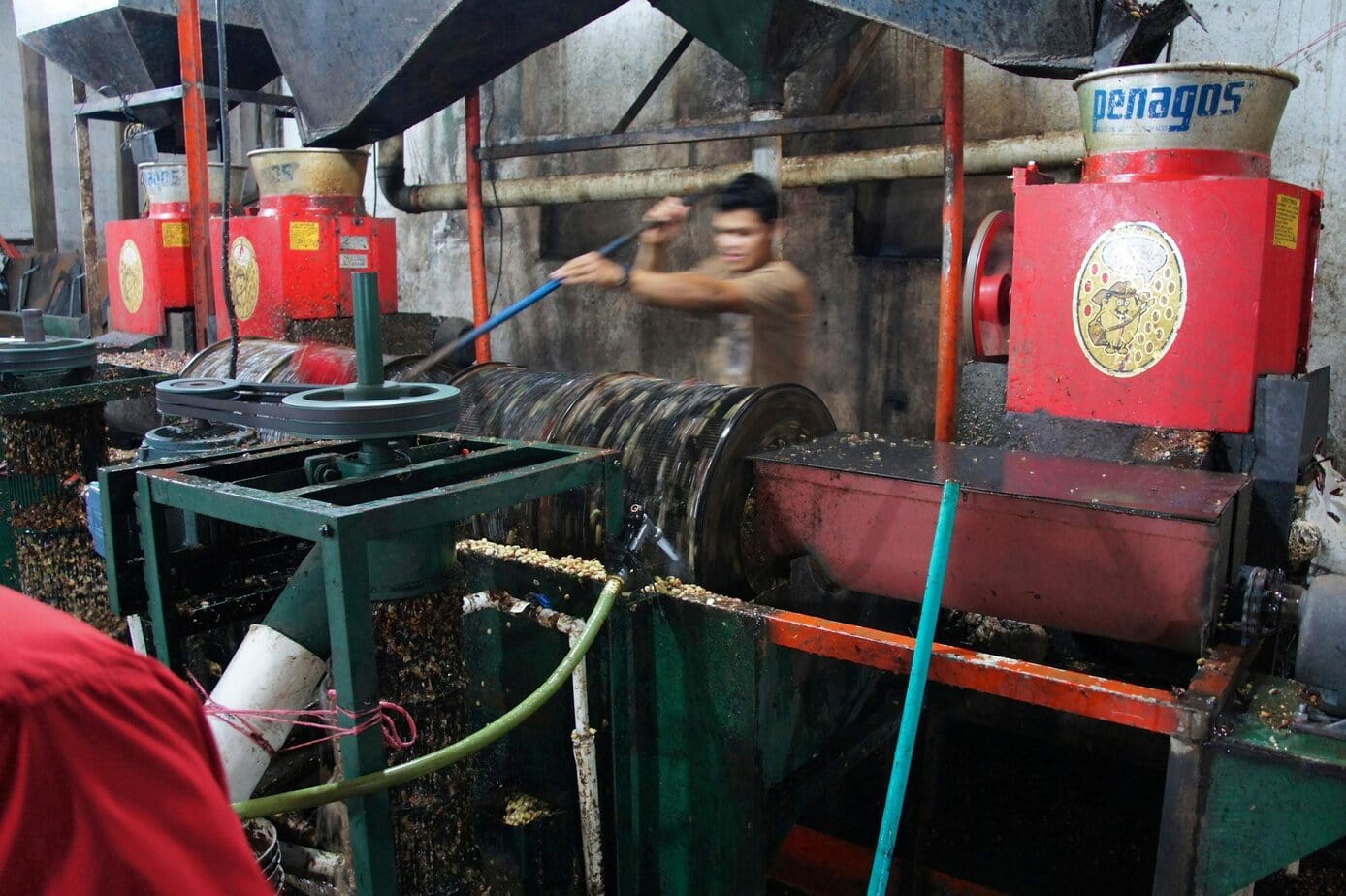
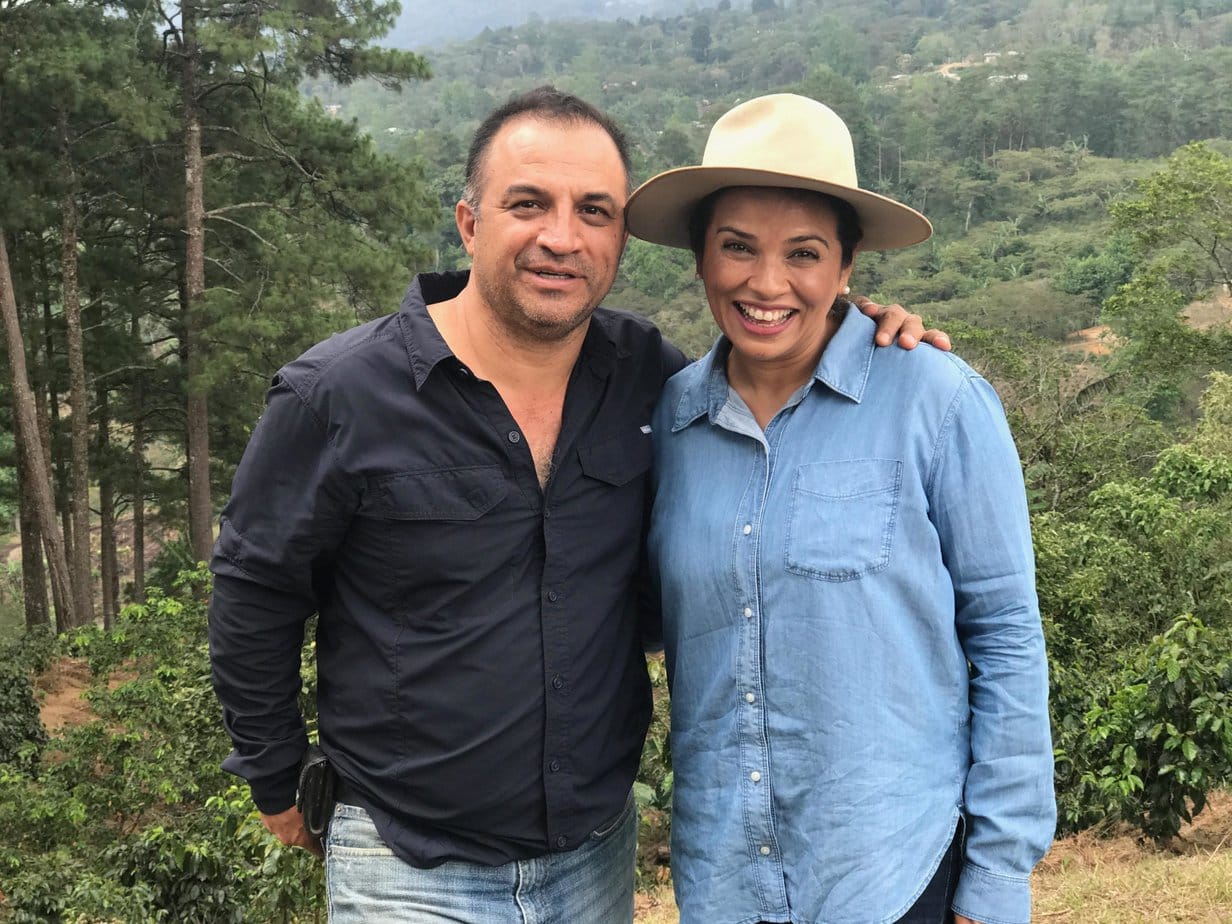
Result
If you prepared these coffees in the same way for each in the series and tasted them side by side you will have noticed some very obvious differences and the impact that processing has on cup profile in Series 1. As you work your way through the series the differences become less obvious but they are there for the tasting and should be able to give you an insight into the finer points of coffee consumption. Play around with the variables as well to get more or less out of the coffees that you choose, but hopefully you will have enjoyed this journey and can agree with us that country alone does not define cup profile.
